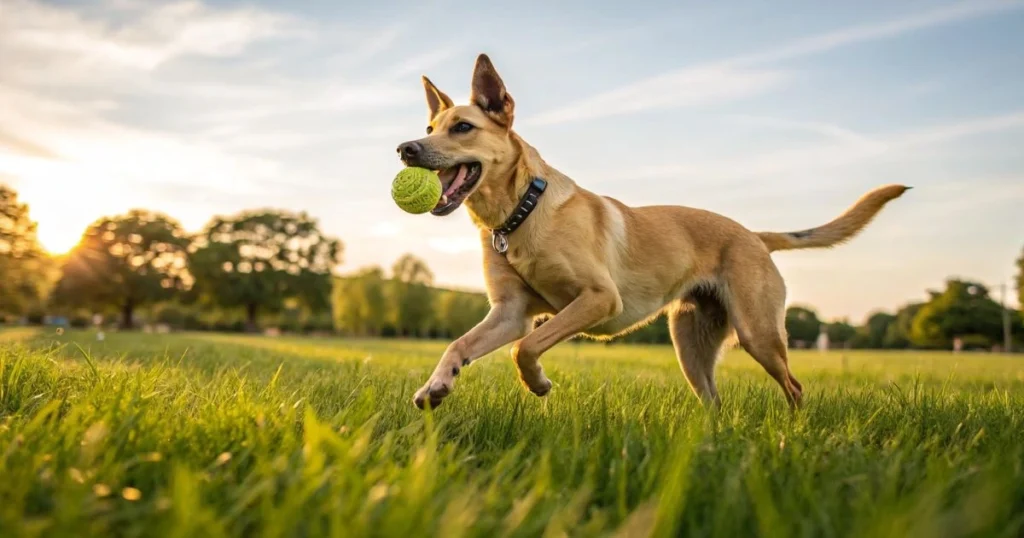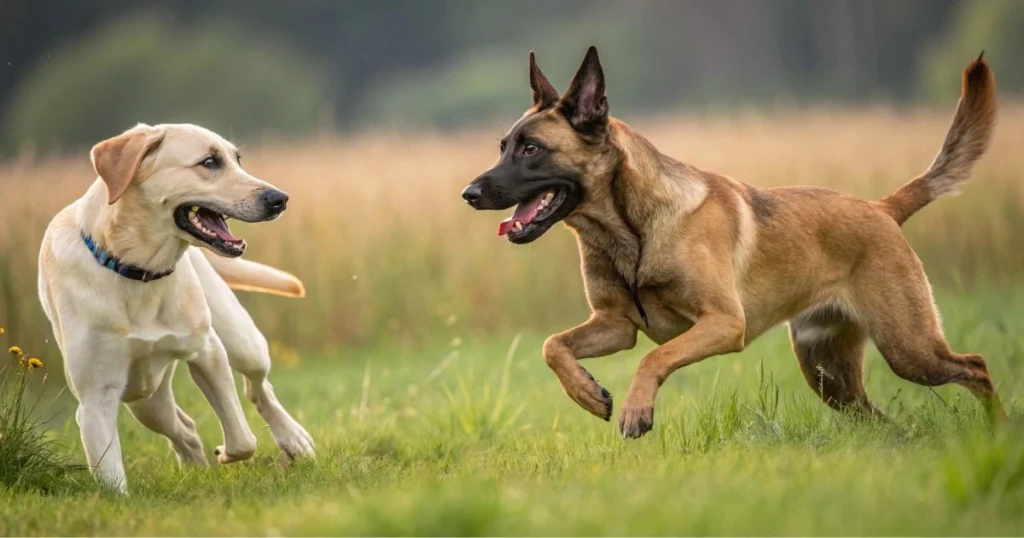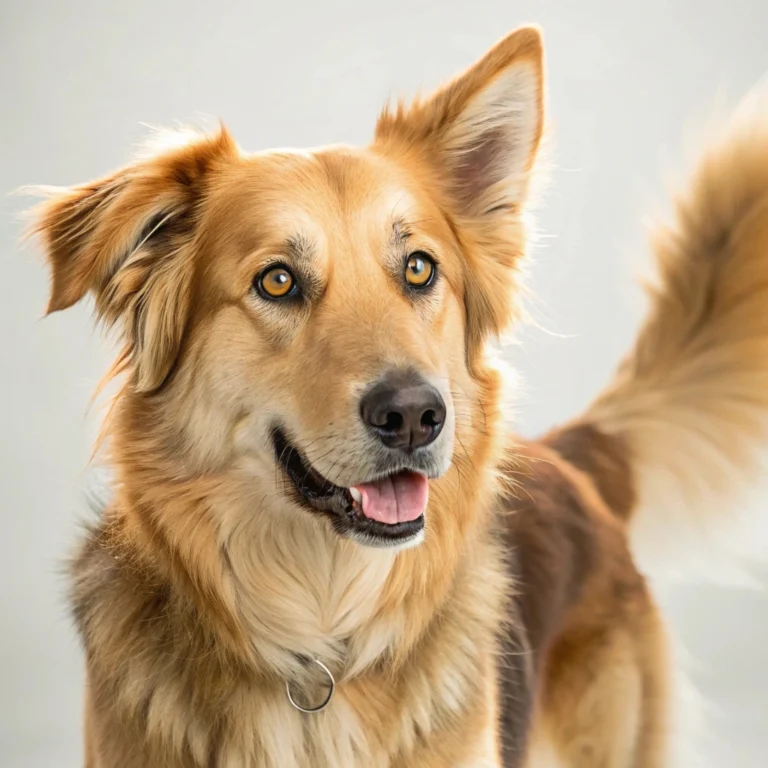Labrador Mix Belgian Malinois: What to expect as a pet owner
Getting a dog is more than just getting a new pet; it is welcoming a new member of your family, a dependable friend, and a devoted guardian. You are about to embark on a journey filled with intelligence, vitality, and unwavering devotion if you are considering getting a Labrador Mix Belgian Malinois. This breed blends the intelligent, hardworking disposition of the Belgian Malinois with the affectionate, gregarious nature of the Labrador Retriever. What was the outcome? A lively, active dog that will push you and give you rewards for everything.
Whether you’re an outdoor enthusiast looking for a trail buddy or a family seeking a vigilant but affectionate watchdog, this hybrid breed offers a unique blend of traits. But make no mistake—owning a Labrador Malinois mix isn’t for the faint-hearted. It requires time, commitment, and a clear understanding of what lies ahead.
Let’s explore what you can truly expect when raising and living with this remarkable crossbreed.
Table of Contents
Give a description of the Belgian Malinois Labrador Mix.

Origins and Parent Breeds
To understand what you’re getting into, it helps to look at the parents:
- Labrador Retrievers are renowned for their friendly, even-tempered nature. Originally bred as fishing dogs in Newfoundland, they’re now America’s most popular breed—valued for their trainability, loyalty, and patience.
- Belgian Malinois, on the other hand, are a working dog’s dream. Hailing from Belgium, they’re known for their intense drive, agility, and intelligence. These dogs are commonly used in military and police forces for a reason—they don’t back down from a challenge.
Now, combine the Labrador’s gentle heart with the Malinois’ sharp instincts, and you get a dog that’s both loving and laser-focused. This mix has a strong work ethic, a deep emotional bond with its owners, and the stamina of a marathon runner.
Why This Mix is Gaining Popularity
You may have noticed more people gravitating toward this hybrid. Here’s why:
- They’re perfect for active families or individuals who want a trainable, alert, and affectionate companion.
- They offer a more balanced temperament than a pure Malinois, making them slightly easier to manage while still maintaining protective instincts.
- They excel in various environments—from suburban homes with fenced yards to countryside farms.
Temperament and Personality Traits
Expectations for the Temperament of a Labrador Malinois Mix
This mix thrives on structure, activity, and connection. Here’s what you’ll likely see:
- Energy that never quits: This isn’t a couch potato dog. Expect long walks, daily fetch sessions, and possibly even agility or obedience competitions.
- Loyalty that runs deep: Once bonded, this dog becomes your shadow. They’re often referred to as “velcro dogs.”
- Protective instincts: The Malinois heritage brings out a natural guardian tendency. This dog watches over its family with vigilance.
- Social when trained: With proper early exposure, they can get along with kids, other pets, and strangers—but you need to put in the work.
Ideal Household Environment
You’ll need to be honest about your lifestyle. This breed thrives in homes that offer:
- Exercise: You should try to make time for daily jogs, hikes, or active play.
- Mental stimulation: Puzzle toys, scent games, and training drills are essential.
- Space to move: A backyard is ideal, but even apartment dwellers can manage if they’re highly active and dedicated.
This isn’t the dog for you if you’re gone all day or lack the time and energy for training.
Training and Socialization Needs
Intelligence That Demands Engagement
Your dog will likely be among the smartest in your neighborhood, but that intelligence comes with a price: boredom can turn into destruction.
- Start training early—as young as 8 weeks.
- Use positive reinforcement techniques (treats, toys, praise).
- Avoid harsh punishment—it breeds fear and aggression.
- Incorporate both physical and mental workouts into the day.
Socialization Tips
If you want a well-rounded companion, you’ll need to invest in proper exposure:
- Frequently expose your dog to other people and dogs.
- Consider puppy socialization classes.
- Encourage calm behavior around strangers and other animals.
Poor socialization leads to overprotectiveness or fear-based aggression, especially with the Malinois genes in play.
5 Foundational Commands to Teach Early
- Sit – for attention control
- Stay – helps manage impulses
- Come – crucial for off-leash safety
- Leave it – prevents scavenging or aggression
- A heel is required when taking a powerful dog for walks.
Exercise and Activity Levels
Daily Energy Requirements
You’ll need to commit at least 60–90 minutes of physical activity per day. Some owners even find two hours is more suitable. This could include:
- Long leash walks or jogs
- Fetch with a ball launcher
- Trail runs or hikes
- Dog sports like agility or dock diving
Indoor Mental Stimulation
Don’t forget to challenge their brain too. Try:
- Puzzle feeders and interactive toys
- Hide-and-seek with treats
- Obedience drills
- Tug and structured games that require listening
Nutrition and Feeding Guide

Balanced Diet Needs
With a high metabolism and active lifestyle, your dog needs a balanced, protein-rich diet. Focus on:
- Protein (22–30%) for muscle maintenance
- Fats (12–18%) for energy
- Omega fatty acids for brain and coat health
- Glucosamine & Chondroitin for joint health
Table – Recommended Daily Nutrition by Age
| Age Range | Calories/Day | Protein % | Feeding Times |
|---|---|---|---|
| Puppy (2–12 mo) | 1,200–1,500 | 26–30% | 3–4 meals |
| Adult (1–7 yrs) | 1,000–1,300 | 22–28% | 2 meals |
| Senior (8+ yrs) | 800–1,000 | 18–22% | 2 meals |
Avoid overfeeding, especially since the Labrador side is prone to weight gain.
Size, Weight, and Lifespan
What to Expect in Physical Size
You’re looking at a medium to large dog:
- Weight: 55–80 pounds
- Height: 22–26 inches at the shoulder
Males tend to be slightly larger than females. Genetics play a strong role—if your pup takes after the Malinois side, they may be leaner and more agile. Labrador influence may lead to a thicker build.
Lifespan
- Expect your dog to live around 10–14 years with good care.
Table – Growth and Weight Estimates
| Age | Weight (lbs) | Developmental Stage |
|---|---|---|
| 3 months | 20–30 | Rapid growth |
| 6 months | 35–50 | Early adolescence |
| 12 months | 50–70 | Near full size |
| 2 years | 55–80 | Full adult maturity |
Grooming and Shedding
Coat Type and Maintenance
This hybrid usually inherits a double coat, which means you’ll deal with:
- Moderate shedding year-round
- Seasonal blowouts during spring and fall
Grooming Tips
- Brush twice a week, more during shedding seasons
- Use a slicker brush or deshedding tool
- Bathe every 6–8 weeks unless dirty
- Trim nails monthly
- Clean ears regularly (especially after swimming)
- Brush teeth 2–3 times a week
Health Issues and Preventative Care

Common Health Concerns
While generally hardy, this mix can inherit:
- Hip and elbow dysplasia
- Progressive retinal atrophy (PRA)
- Skin allergies
- Obesity (from the Labrador side)
Preventative Vet Care
- Schedule annual wellness exams
- Ask your vet about joint supplements by age 2
- Maintain a healthy weight
- Keep up with vaccinations and parasite prevention
- Regular dental cleanings for long-term oral health
Living with a Labrador Mix Belgian Malinois
Is This the Right Dog for You?
Before bringing one home, ask yourself:
- Are you active enough to meet its exercise needs?
- Do you have time for consistent training?
- Are you committed to mental enrichment?
- Can you provide a stable, loving home?
If you answer yes, you’re on the path to building an unbreakable bond with a loyal and brilliant dog.
Success Stories from Owners
Many owners rave about their Labrador Malinois mixes being:
- Unstoppable hiking partners
- Gentle with children when socialized early
- Excellent watchdogs without being aggressive
- Perfect agility or obedience sport companions
Frequently Asked Questions (FAQ)

How big does a Labrador Mix Belgian Malinois get?
Typically, this mix weighs between 55–80 pounds and stands about 22–26 inches tall, depending on the dominant parent traits.
Do children get along with Labrador Belgian Malinois mixes?
Indeed, they make wonderful pets for kids because they are playful and protective when socialized early in life. When dealing with younger children, always keep an eye on them.
What is the recommended amount of exercise for a Labrador Mix Belgian Malinois?
You should expect to dedicate at least 60–90 minutes daily to high-energy play, walks, or training.
Is the Labrador Mix Belgian Malinois a good first dog?
Only if you’re prepared for the challenge. This isn’t a low-maintenance pet—it needs a dedicated, structured, and active owner.
Conclusion: A Rewarding Challenge Worth Every Step
Owning a Labrador Mix Belgian Malinois is like having a companion who’s always up for adventure, fiercely loyal, and endlessly eager to learn. But this isn’t a passive pet—it’s a dog that will challenge you to be your best every day. With structure, patience, and commitment, you’ll earn a bond that few breeds can match. Whether you’re running trails, training new tricks, or simply watching the sunset together, this hybrid will be right by your side—alert, loyal, and full of heart.







